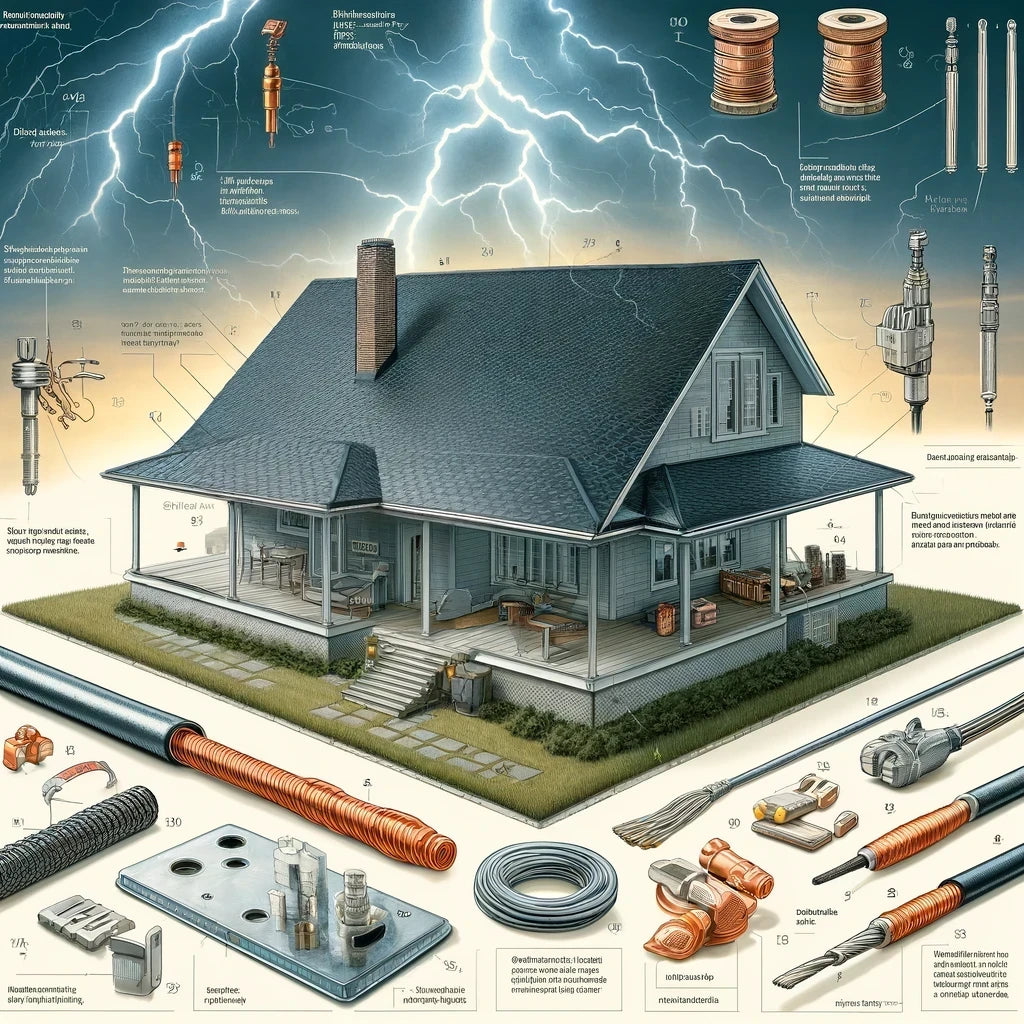Lightning protection systems (LPS) are critical for safeguarding structures from the severe impact of lightning strikes. Designing an LPS requires careful consideration of materials and adherence to established standards like those of the National Fire Protection Association (NFPA) and the Lightning Protection Institute (LPI). This blog post provides a guide on how to estimate the materials you will need for an effective LPS.
Measuring for Conductor Cable
The first step in designing an LPS is to calculate the amount of conductor cable required. The length of conductor needed depends on the perimeter of the structure and the complexity of the roof. Here’s how to do it:
- Outline the structure: Measure the perimeter of the building at the roof level.
- Add for roof features: Include additional cable for any roof features such as dormers, chimneys, and ridges. NFPA 780 and LPI-175 provide formulas and guidelines for determining the additional lengths needed to ensure that all features are connected and protected.
- Consider the down conductors: Factor in the vertical paths from the roof to the ground. The number of down conductors required can vary based on the building’s dimensions and materials, as per LPI and NFPA specifications.
Choosing the Right Conductor Cable
The type of conductor cable used is influenced by the architectural features and the type of roof material. Copper and aluminum are the most common materials used for conductor cables. Here are some guidelines:
- Copper cables are preferred for their durability and lower resistance, making them suitable for most buildings, including those with tile or slate roofs.
- Aluminum cables are more cost-effective and are suitable for buildings with less corrosive environments. They should not be used on buildings with copper or steel structural components to avoid galvanic corrosion.
Selecting Bases and Air Terminals
Air terminals, or lightning rods, are installed on the roof and are connected to the conductor cable. The bases that hold these rods must be chosen based on roof type:
- Adhesive bases are used for flat membrane or bituminous roofs.
- Clamp-on bases can be used on metal roofs and are designed to not penetrate the roof material.
- Screw-in bases are suitable for wooden structures or shingles.
According to NFPA 780, air terminals should be spaced no more than 20 feet apart along the ridge and within two feet of ridge ends.
Fasteners, Clamps, and Splicers
The integrity of an LPS depends on the quality of its connections. Fasteners, clamps, and splicers must be made of the same material as the conductor to prevent corrosion. Use:
- Bimetallic connectors when necessary to connect aluminum and copper components, applying appropriate joint compound to prevent galvanic action.
- UL-listed clamps to ensure a secure and compliant connection to NFPA and LPI standards.
Grounding and Ground Rods
Grounding is a critical component of an LPS. The type of ground rod and its installation must comply with NFPA 780:
- Copper-bonded steel rods are widely used due to their effective grounding capabilities and corrosion resistance.
- Connecting rods: Use exothermic welding or mechanical clamps designed for the specific materials being used to connect ground rods to the conductor system.
To connect a copper ground rod to an aluminum conductor system, use a bimetallic clamp or splice specifically designed for such connections to avoid corrosion.
Conclusion
Designing a comprehensive lightning protection system is complex but critical for building safety. Adhering to NFPA and LPI standards, while carefully selecting and estimating materials as outlined above, will ensure that your LPS is effective and durable. For specific calculations and detailed installation guidelines, always refer to the latest editions of NFPA 780 and the standards published by the Lightning Protection Institute. Make an informed decision based on your project's needs. For expert guidance on selecting the ideal material, contact us at 877-866-3189 or sales@lightningrodparts.com. We're here to assist you!

